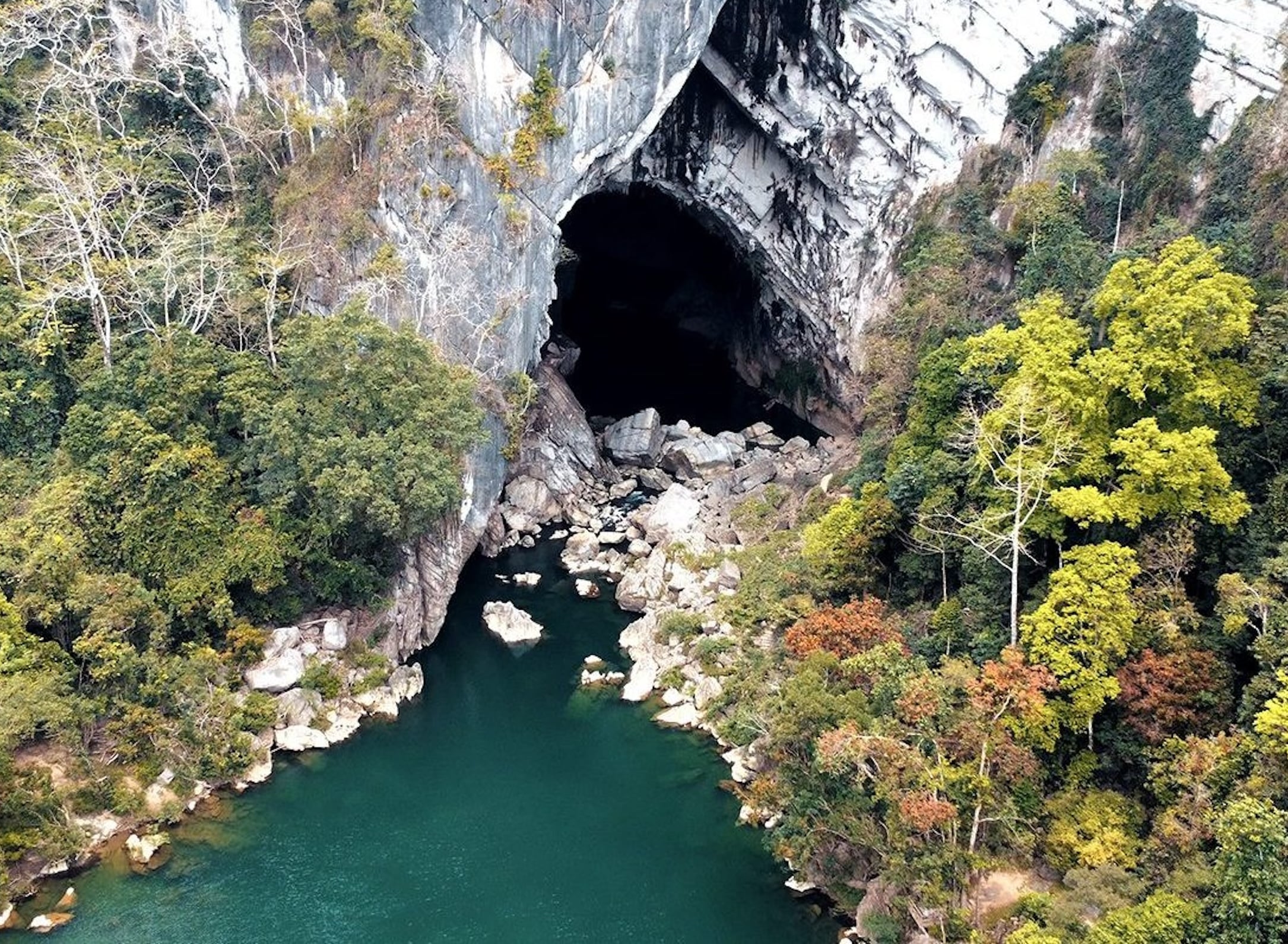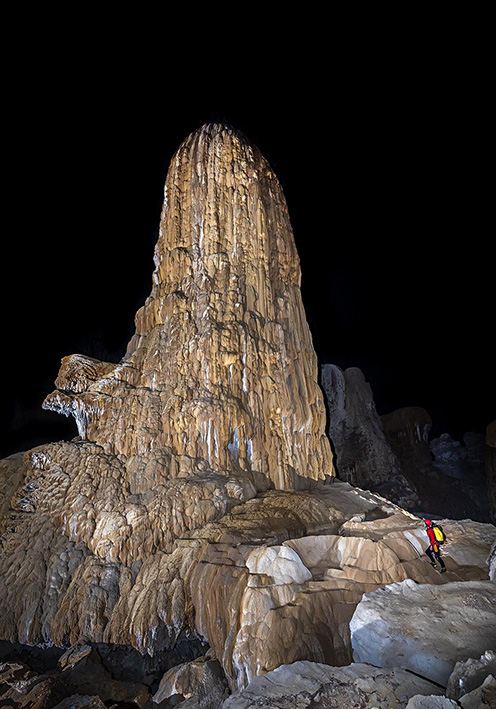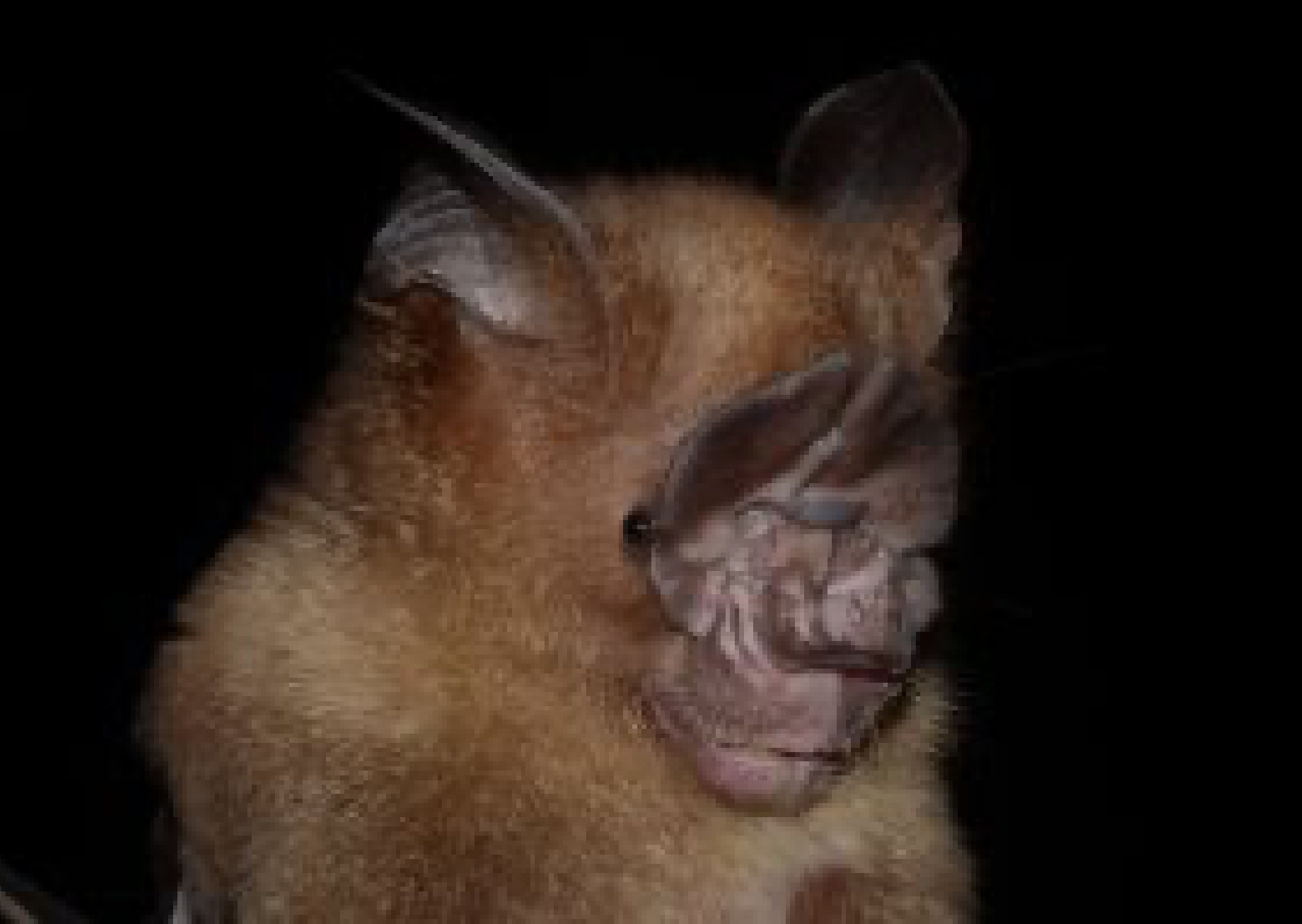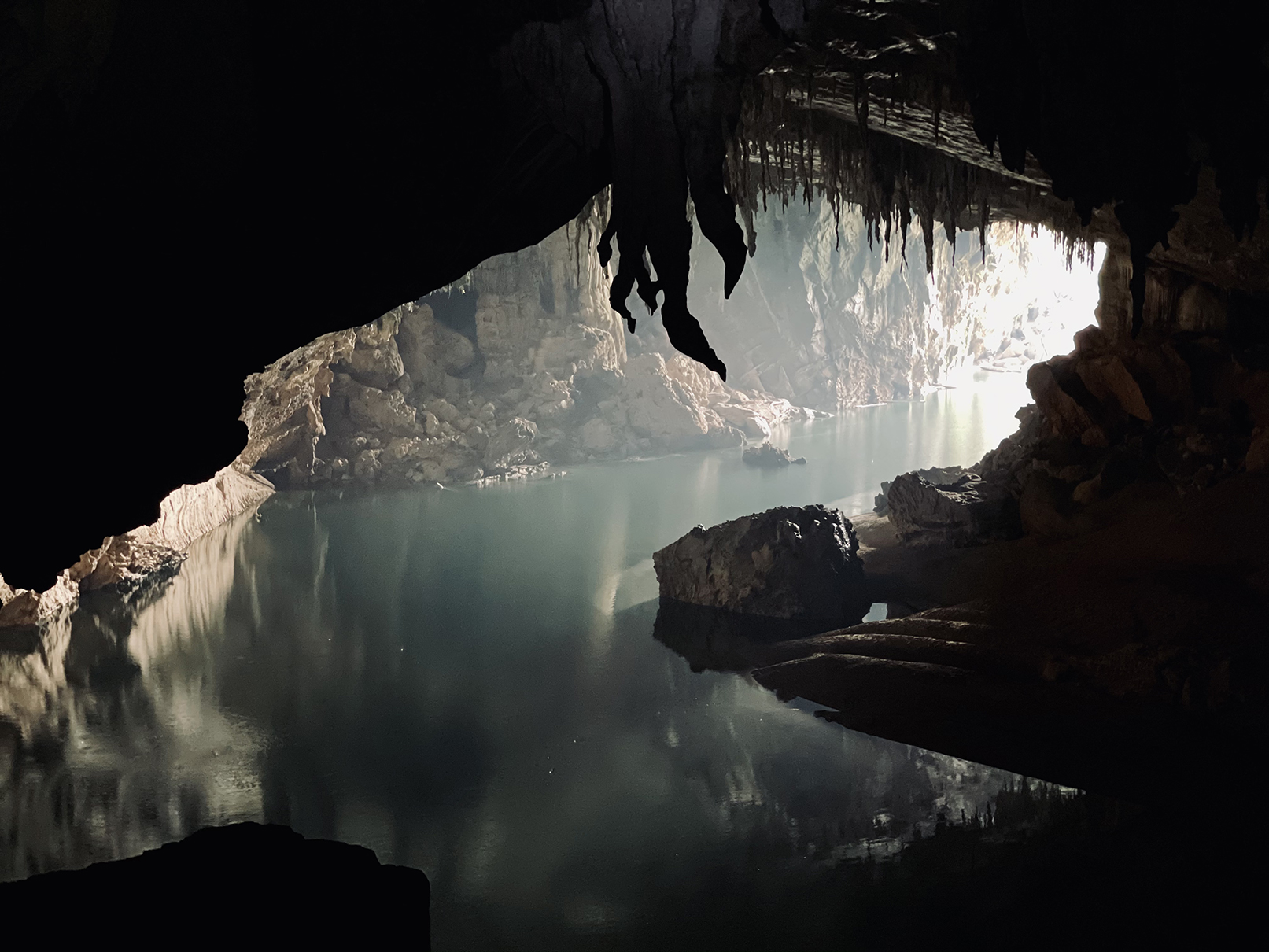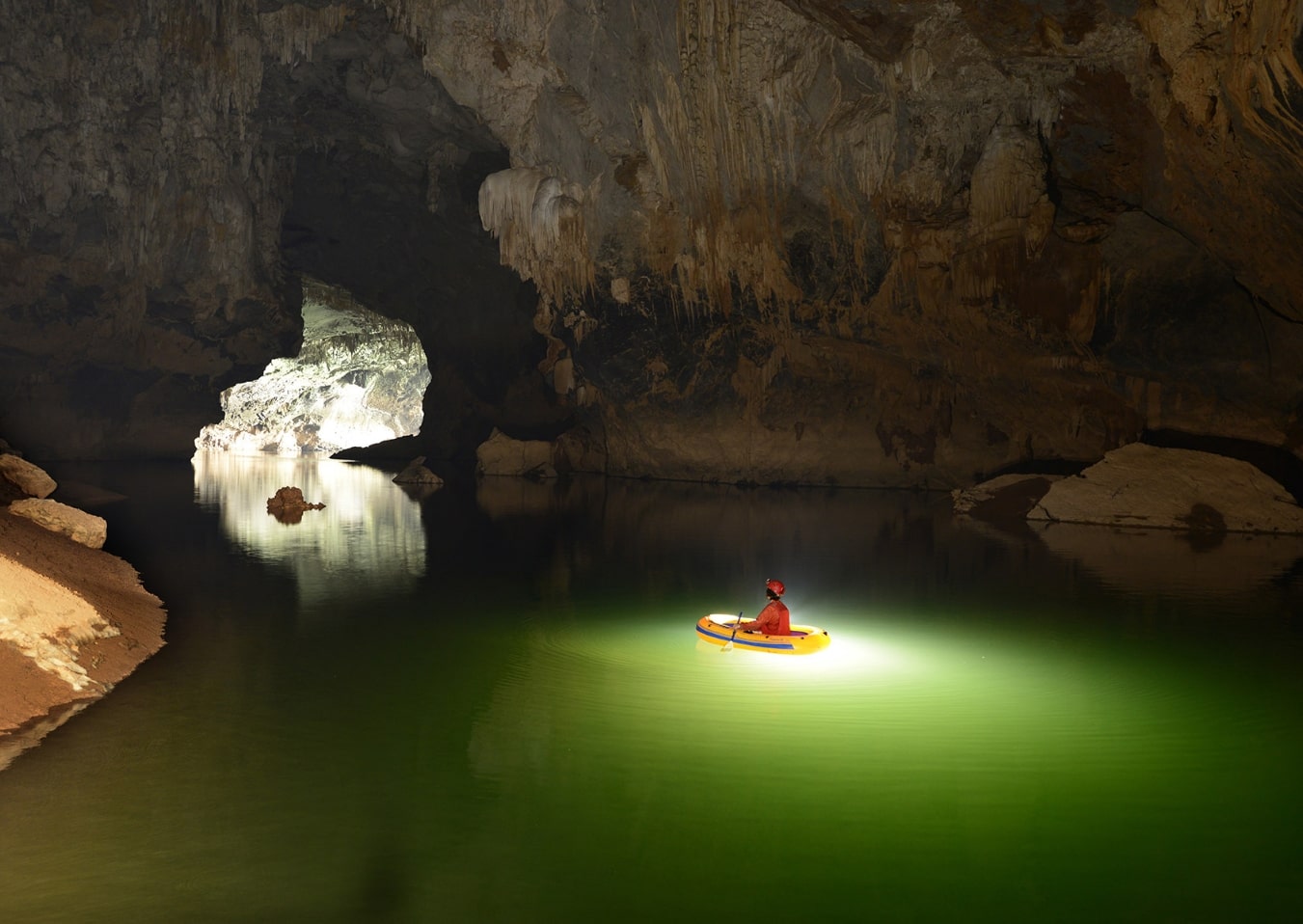XE BANG FAI CAVE
Hin Nam No National Park is home to numerous caves, and among them, the Xe Bang Fai Cave stands out for its unique features. This cave is a natural wonder, created by the Xe Bang Fai River, which has carved a 6.4 km path through the park’s karst terrain during millions of years and make it the largest known active river cave passage in the world. The cave’s active river passage has an average width of 76m and a height of 53m, with a maximum width of 200m and a maximum height of 120m. It is famous for its stunning cave formations and incredible ecosystem.
The Xe Bang Fai Cave is a remarkable underground jewel that was largely unknown until a National Geographic expedition in 2008. The cave’s walls are adorned with magnificent features like flowstone draperies and cave pearls, while inside, there are gour pools measuring up to 61m in length (the world’s largest documented gour pool formed in a cave). Outside the cave, a resurgence pool is encircled by a beach and measures 200m in radius. By preserving this pond as a fish conservation zone, the villagers have facilitated the regeneration of the fish population, ensuring a sustainable source of food for both themselves and the local ecosystem.
The cave is not only an impressive geological feature but also a unique ecosystem that supports a variety of animals depending on the cave environment. It is home to several species that are endemic to the Hin Nam No National Park and/or its surroundings, such as the cave spider (Heteropoda steineri), a cave-adapted scorpion (Troglokhammouanus steineri), blind fishes (Speolabeo musaei and Schistura kaysonei) and the the Giant Huntsman spider (Heteropoda maxima) which was admitted to the Guinness Book of Records as the largest spider in the world.
An astonishing bat fauna (10 species, including the Shield-nosed Leaf-nose bat, endemic to Laos and Vietnam) can also be observed and indicates the healthiness of the ecosystem. The bats play an important role in this ecosystem as they are primary predators of insects, help with pollination and seed dispersal, and their guano provides the primary nutrient source for the entire cave ecosystem. The Xe Bang Fai Cave’s healthy bat population is an essential factor for its rich biodiversity and unique species composition. The cave is a remarkable example of how life can thrive in extreme environments.
The Xe Bang Fai Cave has played an important role in the lives of the people around it for generations. It has been a source of inspiration as well as a place of reverence and worship and has a rich history and beliefs associated with it. For the villagers, the cave was believed to be the source of the Xe Bangfai river and was known as Tham Khoun Xe, meaning "the cave at the source of the river".
According to a village legend, the cave is inhabited by a benevolent spirit that is known to help those who enter its chamber. The spirit was known to lend beautiful clothes to individuals for various ceremonies, and in one instance, a broken musical instrument (khaen) left at the entrance was found restored to immaculate condition the next morning.
Despite being a site of conflict during the war, the cave remained untouched by bombings, which villagers see as a sign of the spirit's protection. Additionally, an annual sacrificial offering is made to the cave spirit to ensure its continuing protection. The villagers hold a deep respect for the cave and its spirit, and they have maintained this reverence throughout the years.
Guests to Hin Nam No National Park can take a 1 1⁄2-hour tour of the Xe Bang Fai Cave, where they can marvel at its natural wonders. Rather than using motorized boats, village boatmen paddle in the cave in order to not disturb the cave environment and the bat population. Visitors can then walk inside some of the cave's magnificent limestone chambers to witness the spectacular natural decorations, including flowstones and cave crystals of mysterious beauty. Moreover, a climb through a branch cavity leads to a chamber that brings to mind a Dragon Hatchery. Visitors can finally ascend to an elevated balcony and enjoy a softly lit view of the massive opening, which is an experience unlike any other.
The park's campsite is managed by a group of women of Nong Ping village. It is located near the cave's entrance and next to a pristine beach on the Xe Bang Fai river and offers an excellent base for visitors who want to explore the Xe Bang Fai cave and its surroundings and immerse themselves in the park's natural beauty.

